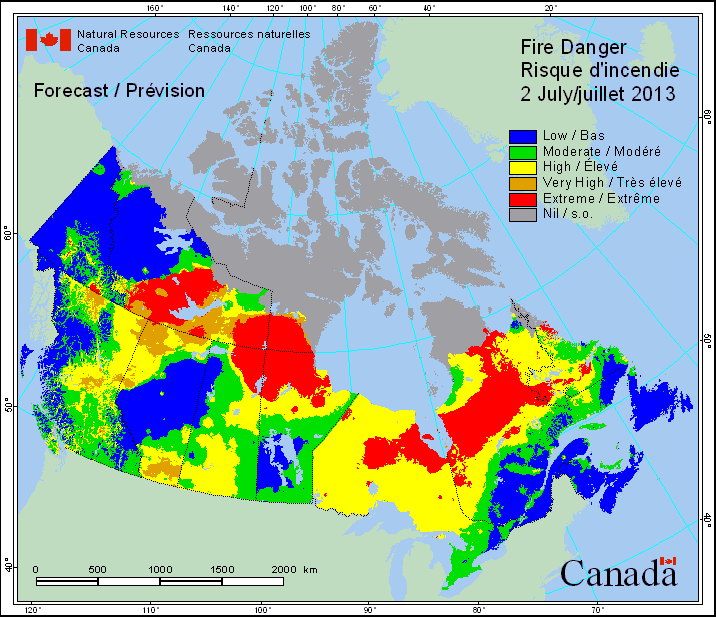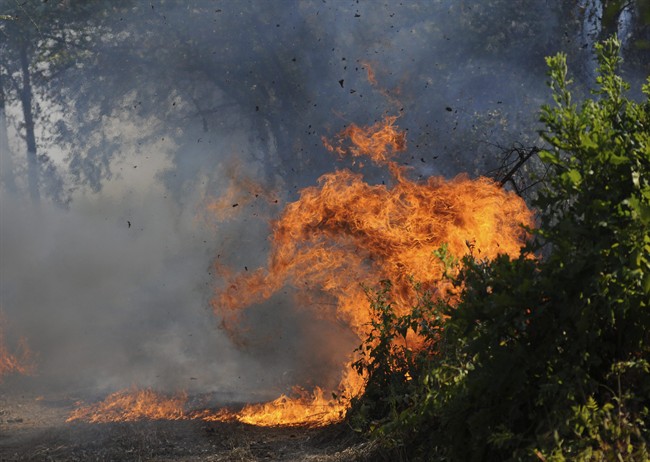The death of 19 firefighters in Arizona on Monday and the fires raging across Labrador are stark reminders of how vulnerable we are to the forces of nature and how easy it is to get caught off guard.

A fire can be started by a careless camper or a thunderstorm. But once it starts, it can be difficult to control.
The necessary ingredients
For a forest fire — any fire for that matter — to start and spread, it needs particular ingredients: fuel, oxygen, and heat. Without all of those present, a fire will quickly die out.
Any dry, wooded area is a ideal place to find a forest fire’s necessary fuel. Pine needles, leaves, grass, moss or small shrubs are all perfect for the job. And obviously weather contributes to the availability of fuel: weeks without rain will make an area with all these potentially fire-feeding fuels dry and perfect for the recipe.
Read: Wabush residents allowed to return home; Labrador town still under fire alert
We know that oxygen exists in the environment, but once again, weather plays a critical factor in the spread of fire. Any wind — as was what happened in Arizona on Monday — can change the way a fire spreads and also enlarge the fire.
The heat required to start a fire can manifest in several ways. It could be a bolt of lightning or a careless cigarette or match left on the ground. Lightning and human factors are responsible for causing 50 per cent of all forest fires in Canada. And, once again, the weather plays a role in the development and spread of fire. An area experiencing high heat helps to dry out the fuels, thus creating the necessary fuel. It’s like an endless circle.

And all fires burn at roughly the same temperature, regardless of fuel.
“People often get confused…and say a fire burned ‘hot,'” said Tim Lynham, Forest Fire Research Project Leader for Natural Resources Canada at the Great Lakes Forestry Centre. “In fact, fires are always the same temperature. They are between 900°C to 1100°C. What changes is the intensity.”
“You increase the intensity by burning it faster. And it burns faster when you have more fuel or more oxygen or more heat.”
“The thing that causes the problem, for example in Arizona…is the rate of release of the energy,” said Lynham. “So when the rate goes up, it’s difficult to protect yourself.”
Phases of fire
Once all these factors are present, combustion — the actual start of the fire — takes place.
There are three phases to a fire: preheating, where the fuels are heated and partially changed into a gas that is ignitable; the second is the oxidation or burning of the gas, creating heat and light; the third phase is the glowing phase, where the charcoal from phase two leaves ash. In order to move from phase two to phase three, heat must be applied to the fuels.
Forest fires can spread in various ways. They can spread in the organic material beneath the surface objects, through the material on the surface and through crown fires which burn across treetops. Crown fires are intense and difficult to control. Canada doesn’t get crown-only fires; typically if there is a crown fire, there is also a surface fire, Lynham said.
In Canada, more than 2,700 forest fires have burned to date this year, covering more than 1 million hectares. In the last 24 hours, northern Canada faced another 13 fires. However, that doesn’t mean that it’s out of control or necessarily a bad thing, Lynham said.
“We don’t always fight them…as they may not be threatening anyone.
“It is not economically feasible nor ecologically desirable to fight all fires. Fires are good. We wouldn’t have the boreal forest without fire. The problem is when it messes up our lives.”




Comments